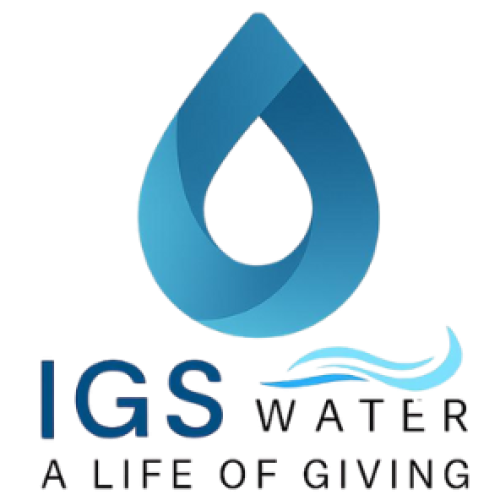Aquaculture continues to grow as global demand for fish and seafood rises, yet many farms still struggle with the same long-standing issues that affect water quality, animal health, and overall productivity. Poor water conditions remain one of the biggest reasons for slow growth rates, fish stress, and high mortality. For farmers, solving these problems often means balancing costs, labor, and reliable technology that can deliver consistent results.
At IGS Water, we focus on providing advanced solutions that directly target these common challenges, helping farms maintain healthier systems with less effort and more efficiency.
Common Water Problems in Aquaculture
1. Low Dissolved Oxygen Levels
One of the most critical concerns in aquaculture is maintaining adequate dissolved oxygen (DO). Fish and shrimp rely on stable oxygen levels, and even short periods of oxygen depletion can lead to stress, reduced feeding, and sudden die-offs.
Traditional aerators often struggle to distribute oxygen evenly, especially in deeper ponds or high-density systems.
2. Excess Organic Waste
Uneaten feed, fish waste, and decaying matter accumulate quickly in aquaculture ponds. This organic load feeds harmful bacteria and reduces oxygen, creating an environment that affects fish health and overall pond stability.
Without proper water movement and treatment, these waste pockets settle and create toxic zones at the bottom.
3. Algae Blooms
Excess nutrients, sunlight, and stagnant water can trigger algae blooms. When algae die off, they consume oxygen and release toxins, creating dangerous conditions for aquatic species. Algae also affects water clarity, which interferes with fish behavior and general pond balance.
4. Unstable Water Stratification
In many ponds, the top and bottom layers of water hold different temperatures and oxygen levels. This stratification limits water circulation and leaves deeper zones with poor water quality. Fish and shrimp avoid these areas, reducing their usable habitat and increasing stocking pressure on the upper layers.
5. Poor Gas Transfer and Inefficient Aeration
Typical aeration methods release large bubbles that rise and pop quickly, transferring only limited oxygen into the water. This results in high energy usage but low effectiveness, making it difficult for farms to achieve stable and efficient oxygenation.
6. Disease Risk from Poor Water Quality
When water quality is unstable, fish and shrimp become more vulnerable to disease outbreaks. Pathogens thrive in low-oxygen and high-waste environments, leading to expensive treatments, losses, and recovery time.
How IGS Water Helps Solve These Aquaculture Challenges
IGS Water provides advanced water treatment solutions designed to address the root causes of aquaculture water problems. Our technologies help create stable, oxygen-rich, and well-balanced environments that support healthier and more productive farm systems.
Nanobubble Technology for Improved Oxygenation
Nanobubbles stay in water far longer than traditional bubbles, allowing more efficient oxygen transfer throughout the pond. Because they remain suspended, they help oxygen penetrate deeper, reaching bottom layers that normally suffer from low DO.
This helps reduce fish stress, improves feeding behavior, and stabilizes water quality even in high-density systems.
Better Waste Breakdown and Water Clarity
Nanobubbles support the natural breakdown of organic waste by improving the oxidation process. Cleaner water reduces harmful bacteria, prevents sludge buildup, and promotes a healthier environment for fish and shrimp growth.
Effective Algae Control
The improved oxygen distribution and oxidation from nanobubbles help limit algae growth and reduce the conditions that trigger algae blooms. This supports clearer, more stable water throughout the production cycle.
Enhanced Circulation and Destratification
IGS Water systems help break down stratified layers and promote proper water mixing. By balancing temperature and oxygen from surface to bottom, ponds become more uniform and less stressful for aquatic species.
Better circulation also means fewer stagnant zones and more consistent water quality.
Energy-Efficient and High-Performance Aeration
Our solutions deliver more oxygen while using less energy compared to traditional aerators. This allows farms to lower operational costs while maintaining stronger water performance.
Supporting Healthier Aquatic Life
With more stable oxygen levels, reduced waste, controlled algae, and improved circulation, fish and shrimp have a healthier and more predictable environment. This significantly lowers disease risk, improves growth rates, and increases survival throughout the farming cycle.
Building More Resilient Aquaculture Systems
Water quality is the foundation of every successful aquaculture operation. By addressing oxygen limitations, waste accumulation, algae issues, and water imbalance, farmers can create more reliable and productive systems.
IGS Water’s advanced technologies help farmers reduce risks, improve efficiency, and support stronger yields—all while maintaining more sustainable operations.
If you’re looking to solve persistent water challenges in your aquaculture farm, IGS Water is here to support you with reliable, science-backed solutions.

